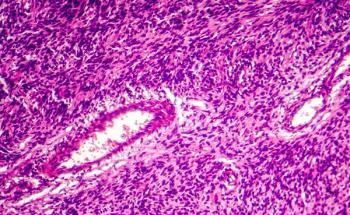
Diffuse Macular Damage Linked to Diminished Facial Recognition, Contrast Sensitivity
Among patients with glaucoma, diffuse rather than focal glaucomatous macular damage was associated with diminished facial recognition and contrast sensitivity, according to results of a cohort study published in JAMA Ophthalmology.
Among patients with glaucoma, diffuse macular damage was associated with diminished facial recognition and contrast sensitivity (CS), according to results of a cohort
Facial recognition is a complex visual task that relies on central visual function and CS. Because it is vital for social interaction and forming relationships, any impairment to facial recognition negatively impacts quality of life.
“Because CS is a clinical measure of macular function and is critical to successful facial recognition, it may be an important component to the association of macular damage with impairment of facial recognition,” the authors hypothesized.
Focal or diffuse patterns of macular damage are differentiated by comparing abnormal regions on the 10-2 VF with corresponding regions on retinal ganglion cell (RGC) and retinal nerve fiber layer (RNFL) probability maps. However, it is unclear how each type of macular damage contributes to visual disability.
To evaluate the association of the pattern of glaucomatous macular damage with CS and facial recognition, and to gain a better understanding of the relative contribution of focal and diffuse macular damage in visual disability, the researchers carried out a prospective cohort study.
A total of 72 patients who presented at the Department of Ophthalmology at Columbia University Irving Medical Center in New York between March and April 2019 were included in the analysis. All participants had a diagnosis of primary open-angle glaucoma in 1 or both eyes, as determined by a glaucoma specialist, and underwent a comprehensive ophthalmologic exam. Spectral-domain OCT (SD-OCT) images were also acquired while VF testing was performed with the Humphrey Field Analyzer II.
“The SD-OCT RNFL and RGC+ and 10-2 VF data were examined for the presence of corresponding regions of macular damage on VF and OCT probability maps to classify eyes as having focal, diffuse, or mixed macular damage.”
Of the 72 participants, 49 (68%) were White, 41 (57%) were female, and the mean (SD) age was 67 (11.6) years. At baseline, of the 72 better-seeing eyes, 44 (61%) had macular damage, 22 (50%) had focal damage, 15 (34%) had diffuse damage, and 7 (16%) had mixed focal and diffuse damage. Among the 72 worse-seeing eyes, “63 eyes (88%) had macular damage and 9 (12.5%) did not. Of 63 eyes with macular damage, 26 (41%) had focal damage, 19 (30%) had diffuse damage, and 18 (29%) had mixed focal and diffuse damage.”
The researchers found:
- Eyes with diffuse damage had greater contrast impairment compared with eyes with focal damage (β = −0.5; 95% CI, −0.6 to −0.4; P < .001) after adjusting for 10-2 VF mean deviation (MD), 24-2 VF MD, age, presence of an early cataract, and number of drops
- Cambridge Face Memory Test scores were significantly lower in patients with diffuse rather than focal macular damage, regardless of eye (better-seeing eye: β = 10.0; 95% CI, 2.0-18.2; P = .001; worse-seeing eye: β = 5.5; 95% CI, 0.8-10.0; P = .23)
- Relative risk of facial disability was greater for patients with diffuse but not focal macular damage in the better-seeing eye (relative risk, 86.2; 95% CI, 2.7-2783.3; P = .01)
Overall, the results suggest diffuse macular damage is disproportionately associated with both CS and facial recognition impairments as opposed to a focal pattern of damage.
“Although diffuse damage may be more difficult to identify than focal damage, it is an important determinant of visual function and should prompt early and aggressive intervention. Therefore, careful evaluation of the macular OCT and 10-2 VF and resultant early detection of diffuse macular damage is critical to minimize glaucoma-related visual disability,” the researchers concluded.
Reference
Hirji SH, Hood DC, Liebmann JM, Blumberg DM. Association of patterns of glaucomatous macular damage with contrast sensitivity and facial recognition in patients with glaucoma. JAMA Ophthalmol. Published online November 5, 2020. doi:10.1001/jamaophthalmol.2020.4749
Newsletter
Stay ahead of policy, cost, and value—subscribe to AJMC for expert insights at the intersection of clinical care and health economics.














































